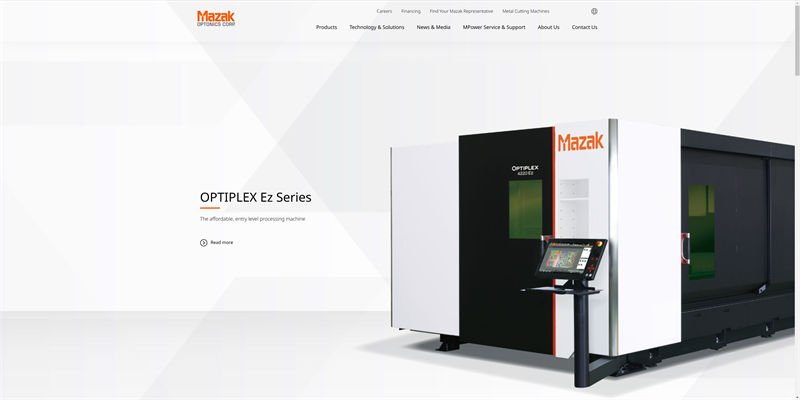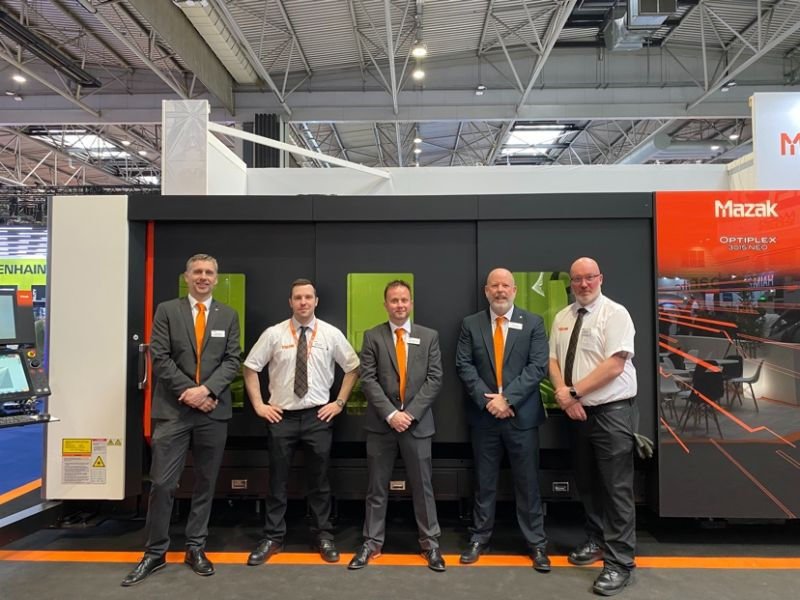
Ever thought about why Mazak fiber laser cutters have a price similar to a luxury car?
Mazak fiber laser cutters cost a lot because they use the latest technology. The design quality is high and their performance has no equal. These cutters contain modern parts that offer precision and efficiency. This investment is valuable compared to other laser cutters.
At first, the high price of the Mazak fiber laser cutter surprised me. Researching these machines felt like peeling an onion, each layer showing something more amazing. These cutters come with smart features and strong parts. They really improve a workshop’s productivity.
A friend needed help choosing a big purchase for his small manufacturing business. It was like watching the future take shape. The machine could manage complex designs with perfect precision. This didn’t just increase his production; it attracted new clients who preferred high quality. The initial cost is high. Long-term benefits are like seeds growing into a successful forest of opportunities.
Mazak fiber laser cutters use outdated technology.False
Mazak fiber lasers use cutting-edge technology, ensuring efficiency.
Mazak fiber laser cutters offer high precision and efficiency.True
These machines are known for their precise and efficient operations.
Why is Mazak’s Technology So Impressive?
Do you ever ask why Mazak’s technology leads in CNC machining?
Mazak’s technology stands out with its ability to perform many tasks at once. It uses easy-to-understand CNC controls. Adaptive automation solutions further highlight its strengths. These features raise the standards for efficiency and productivity in manufacturing. Mazak really improves manufacturing a lot.

Multi-Tasking Capabilities
I remember when I first saw a Mazak machine. It felt like watching a concert where every part plays at the same time. Mazak’s multi-tasking machines changed everything, doing milling and turning together. Imagine cooking a big meal without cleaning up between each dish – everything runs smoothly and time disappears. The INTEGREX series1 stands out because it combines many tasks into one machine, cutting down on setups and moving parts around. This really increases productivity.
User-Friendly CNC Controls
Using CNC controls sometimes feels like solving a puzzle in the dark. Mazak’s Smooth Technology turns these complex tasks into something simple. Their controls are clear and easy to use, almost like the machine knows what you want. I love the MAZATROL SmoothX control2 for its real-time checking features – it’s like having extra eyes watching your work, keeping everything smooth.
| Feature | Benefit |
|---|---|
| Touchscreen UI | Intuitive operation |
| Smart Monitoring | Real-time efficiency tracking |
Adaptive Automation Solutions
I always appreciate automation that’s simple to understand. Mazak’s automation fits right into existing work plans. Their robotic arms and pallets work smoothly without problems. The PALLETECH system3 is a great example – it organizes your tasks with little help from people, freeing you to think creatively.
These innovations explain why Mazak leads in manufacturing. By focusing on multi-tasking, easy designs, and strong automation, Mazak often surpasses our expectations in modern manufacturing.
Mazak's INTEGREX series reduces setup times.True
The INTEGREX series combines multiple processes in one machine.
Mazak's CNC controls lack real-time monitoring.False
MAZATROL SmoothX control offers real-time monitoring features.
How Do Material Choices Affect Costs?
Selecting suitable materials often seems like a big adventure. Different options change costs and results.
Material choices influence costs through availability, durability and processing needs. Each material’s starting price and total expenses during its life can differ, shaping overall financial choices.

Initial Cost Considerations
When starting to choose materials for a project, I consider it similar to shopping for a big family meal – there’s a lot to think about! The first thing to check is the initial cost, which mostly depends on how easy it is to find and how many others want it. For instance, titanium alloys4 are like the fancy organic fruits of materials – expensive but very strong and light. Meanwhile, plastics might seem cheap like basic beans, yet they won’t work in high-stress spots.
| Material | Initial Cost | Durability |
|---|---|---|
| Titanium Alloy | High | Excellent |
| Plastics | Low | Moderate |
Processing Requirements
Choosing the right material is only the beginning; processing is where things get both interesting and expensive. It’s like preparing a fancy meal. Metals need special tools and expert hands, much like a chef who’s skilled in slicing delicate truffles. Composites, however, have their own peculiarities, needing special handling5 that can change production timelines.
Lifecycle Costs
Over time, I’ve realized it’s not just about the first cost but also about future expenses. For example, stainless steel feels like buying a really good pair of boots – it might cost more at first but saves money later since it’s durable and needs little care.
- Durable Materials: Stainless steel, known for long life, probably reduces how often replacements are needed, saving money over time.
- Maintenance Needs: Materials needing frequent care could raise total costs, even if they are cheaper initially.
Environmental and Regulatory Considerations
Sometimes the real cost appears in unexpected ways – like environmental or legal expenses. It’s kind of like choosing organic milk not only for health but also to support eco-friendly practices. Green choices6 might start costly but can fit into sustainability plans and maybe even bring some incentives.
Making the Right Choice
Balancing initial costs with future benefits is often like choosing between immediate rewards and future savings. If your project really needs to be light, it’s probably smart to spend more on lightweight metals even with a higher initial price. By wisely assessing needs and limits, you find that your material choices fit both your budget and performance aims.
Titanium alloys are cheaper than plastics initially.False
Titanium alloys are costly due to scarcity, unlike cheaper plastics.
Stainless steel has higher upfront costs but lower maintenance needs.True
Stainless steel is durable, reducing replacement and maintenance costs.
Are Operational Efficiencies Worth the Investment?
Ever wondered whether investing in operational efficiencies truly transforms your business? Let’s explore the benefits and drawbacks. Let’s find out if it’s the right choice.
Improving how a business runs usually reduces costs. It often increases how much work gets done. Customer happiness might also go up. However, before starting, checking what your business really needs is important. Consider the possible benefits from spending your resources.

Understanding Operational Efficiencies
Operational efficiencies focus on delivering products or services cheaply without losing quality. This often involves optimizing resources and streamlining processes.
For small businesses7, like Ferudun’s laser equipment company in Turkey, investing in operational efficiencies might mean automating order processes or improving supply chain management to reduce purchase costs. Imagine saving on purchase costs just by doing things better!
Benefits of Investing in Efficiencies
-
Cost Reduction:
- I have witnessed that reducing waste and using resources wisely can lower expenses. For example, Alexander, an e-commerce seller, benefits from efficient inventory systems. He avoids overstocking and spends less on storage.
-
Increased Productivity:
- Streamlined operations lead to faster production times. Employees then focus on strategic tasks rather than mundane, repetitive ones. Once, we introduced a just-in-time inventory system8; it saved us a lot of space and money.
-
Improved Customer Satisfaction:
- Efficient operations usually improve service delivery and product quality. Meeting customer demands quickly keeps them returning, which is very valuable.
Challenges and Considerations
-
Initial Investment Costs:
- New technologies and staff training need upfront spending. I learned to compare these costs with possible long-term benefits very carefully.
-
Change Management:
- Change is tough. I remember resistance when we changed workflows. Effective communication and training helped us succeed.
-
Measuring ROI:
- Calculating ROI for these changes can be difficult as benefits often appear over time. Understanding this is important.
To better understand whether operational efficiencies are suitable for your business, consider utilizing resources like this comparative table9 showcasing different efficiency strategies:
| Strategy | Cost Impact | Time to Implement |
|---|---|---|
| Lean Manufacturing | Medium | 6-12 months |
| Six Sigma | High | 12-18 months |
| Total Quality Management | Medium | 12+ months |
Exploring these strategies can provide insights into which might align best with your business goals. For additional detailed guidance, consider exploring external resources10 for broader perspectives.
Operational efficiencies always reduce costs.False
While often true, not all operational efficiencies guarantee cost reduction.
Improved efficiency can boost customer satisfaction.True
Efficient operations enhance service delivery and product quality.
How Does Brand Reputation Influence Pricing?
Some brands easily justify their higher prices. Reputation is the key.
Brand reputation affects prices by letting businesses charge more. A solid reputation shows perceived quality, trust and reliability. Consumers notice this and agree to pay higher costs. A strong reputation helps brands stand out. It justifies higher prices.

The Strength of How We See Things
I recall the first time I spent a lot on a fancy gadget just because of its brand name. The sleek design didn’t just sway me – it was the brand’s known reputation for top quality and creativity. This perceived value truly matters in a busy market. It really does.
Example: Apple Inc.
Consider Apple11. In a market full of similar tech gadgets, Apple shines, often with prices that surprise you. Yet, people, like me, decide to pay more for Apple’s promise of the latest technology and trustworthiness.
Trust Equals Higher Prices
Trust takes time; it comes from being consistent and open. Companies like Tesla12 have won customer loyalty by constantly updating their products, giving long-term benefits that are difficult to ignore.
| Brand | Reputation Factor | Pricing Strategy |
|---|---|---|
| Apple | Innovation and Quality | Premium Pricing |
| Tesla | Cutting-edge Technology | Value Pricing |
| Gucci | Luxury and Exclusivity | Ultra-Premium Pricing |
Reputation and Market Standpoint
A strong brand name permits a company to claim a unique place in the market. Luxury brands, for example, rely on their special charm and rich history to justify their high prices. Maintaining such a name? It involves steady branding work.
Recognizing the effect of brand reputation on pricing can guide business owners like Ferudun or Alexander to develop clever pricing plans. They may stand out in competitive spaces by focusing on their brand’s perceived value through quality checks, good service, and clever marketing moves.
Apple charges premium prices due to innovation.True
Apple's reputation for innovation allows it to charge higher prices.
Toyota uses ultra-premium pricing strategy.False
Toyota employs value pricing, focusing on reliability rather than luxury.
Conclusion
Mazak fiber laser cutters are expensive due to advanced technology, high precision, and efficiency. Their multi-tasking capabilities and strong brand reputation justify the investment for improved productivity in manufacturing.
-
Explore how Mazak’s INTEGREX series integrates multiple machining processes into a single setup, enhancing productivity. ↩
-
Discover how Mazak’s SmoothX control system simplifies complex machining processes with user-friendly interfaces. ↩
-
Learn about the PALLETECH system’s role in optimizing workflow through advanced automation solutions. ↩
-
Explore why titanium alloys are costly and what benefits they offer in high-performance applications. ↩
-
Learn about the unique handling requirements for composites and how they impact production processes. ↩
-
Discover how eco-friendly materials can align with sustainability goals and potential cost benefits. ↩
-
Discover how small businesses can leverage operational efficiencies for growth and competitiveness. ↩
-
Learn how just-in-time inventory systems can reduce costs and improve efficiency. ↩
-
Compare various operational efficiency strategies to find the best fit for your business needs. ↩
-
Access comprehensive guides and expert opinions on enhancing operational efficiency. ↩
-
Learn how Apple’s reputation for quality and innovation allows it to maintain high pricing. ↩
-
Explore how Tesla’s customer trust impacts its pricing strategy. ↩



